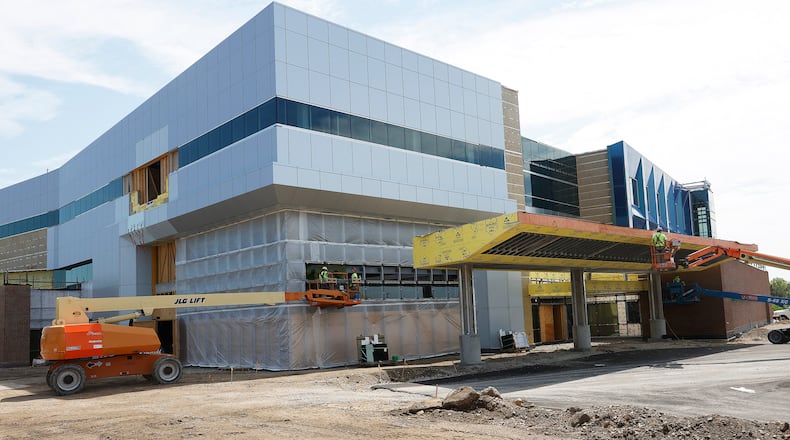But while many — including debt-holders and property owners trying to sell — welcome lower rates, some observers say their enthusiasm is more tempered.
“Too little, too late,” said Chris Riegel, chief executive of digital technology company Stratacache and owner of several key downtown Dayton properties. “Many properties in the region are already being firesale-priced because of interest rate headwinds the past two years.”
Jeffrey Haymond, economics professor at Cedarville University, said the U.S. stock market has expected lower rates for a while.
“It is a big deal, although to be clear, the markets have been anticipating this for a year,” Haymond said. “So that’s not necessarily going to have as big an effect as you might think.”
Credit: Michael Pitman
Credit: Michael Pitman
Lower rates may ease more money in the economy, and they can help companies wrestling with debt, he said.
Some $1.5 trillion in U.S. commercial real estate debt faces a reckoning, he said, with those debts coming due or ripe for refinancing.
In many cases, those are interest-only loans, for shorter terms, perhaps three years. A developer is betting he or she will have enough money to get a project off the ground and pay off the loan. Haymond believes we’re seeing higher bankruptcies and stress on the banking system because of bad loans in this sector.
“The waterfall has already started with commercial real estate,” he said. “In many cases, they’re just giving the keys back to the lenders.”
His contrarian take on the overall issue: It’s not as simple as high interest rates are “bad” and low interest rates are “good.” In fact, savers benefit from higher rates, he noted.
“There are two sides to the coin,” he said. “There are borrowers and there are lenders. And we have both in the area.”
The U.S. has been in a commercial recession for the past 2.5 years, argues Riegel, of Stratacache.
“This recession has been masked by over $1 trillion per quarter in federal government spending and new debt,” he said. “(Fed) chairman (Jerome) Powell lowering interest rates now is symbolic of the government being behind the power curve to the real economy that every American deals with daily.”
The economic challenges ahead are substantial, and Riegel said he has little faith that a 50 or 75 basis-point drop will change that trajectory.
Credit: Bill Lackey
Credit: Bill Lackey
Still, manufacturers may breathe a sigh of relief. Tom Evans, spokesman for the Ohio Manufacturers Association, said lower rates let manufacturers reinvest in assembly lines.
Mortgages for manufacturing workers will become more affordable, Evans said. Manufacturing pays an average annual wage of over $70,00, meaning workers can generally afford home ownership — but lower interest rates will open doors to higher-quality housing.
“Lower interest rates will make products made in Ohio more affordable for the public at large,” he said. “Whether you are talking Ohio-made cars and trucks, or appliances, or industrial machinery, with lower interest rates, those durable goods become more affordable, boosting sales potential.”
Henry Willmore, a University of Dayton lecturer in economics, said the prospect of lower rates has already fed through to other rates, including mortgage rates. The average rate on 30-year mortgages rise and fall, but has fallen from 6.5% earlier this year. And they probably will drop some more, he said.
The promise of lower rates is a general shot in the arm, he said.
“It’s really interest rates across the board — mortgages, corporate bonds, municipals bonds, U.S. treasurys — all of those go down, even before the Fed eases,” Willmore said.
About the Author




